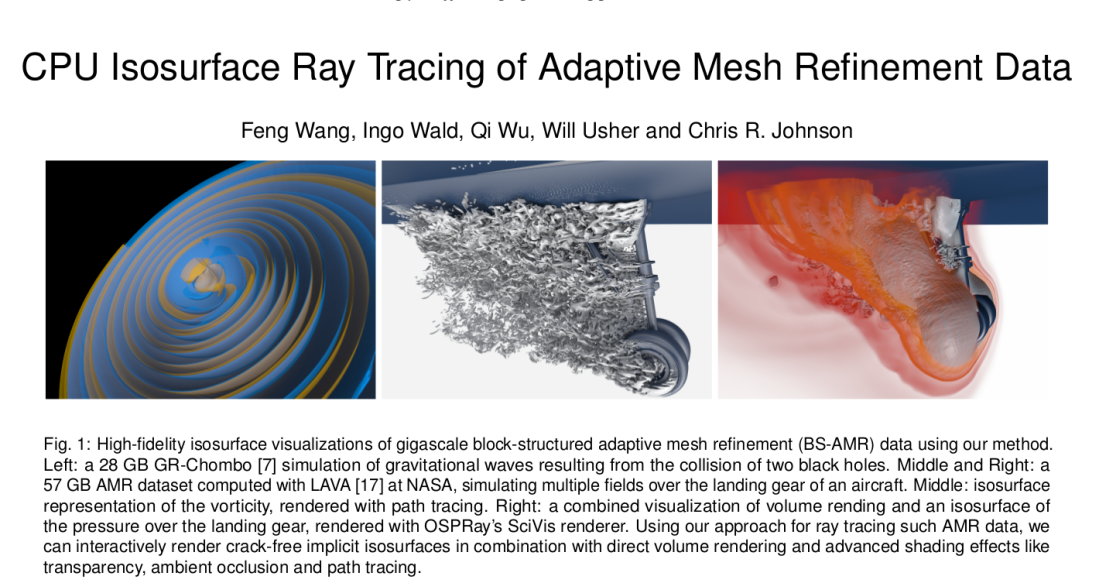Finally gotten to making an “authors copy” and uploading it to my blog, but here it now is – a preprint of our Vis 2019 paper on “CPU Isosurface Ray Tracing of Adaptive Mesh Refinement Data” (link to pdf).
A few notes:
- This paper is a direct follow-up to our previous AMR volume ray tracing paper (published at last year’s SigAsia Vis Symposium), but adds implicit iso-surface ray tracing capability (using a correct, analytic intersection method). The “octant method” reconstruction scheme was actually already sketched in the original submission of that previous paper, but wasn’t explained well enough back then, so got axed in the final version.
- The “octant method” that this paper introduces is actually – if I may say so – pretty neat, because it’s both interpolating and continuous, even in corner cases. It may, however, well be the one thing in my career that I had to expent the most brain power to get right – it’s trivial in 1D, but even in 2D it took a while to get it right, and 3D has even more corner cases that some earlier attempts failed on (If only you could see the stack of notebooks all full of sketches: at one point I used xfig to draw a 2D AMR example, printed a few hundred pages full of that template, and pretty much used them all up going through the algorithm step by step, for each cell, until it finally worked!?). Worked on this – on and off – for almost 3 years, which is kind-of ridiculous …
- The code is all implemented in OSPRay (of course?), as a loadable ospray module that is fully compatible with all other ospray actors (renderers, other geometry types, MPI parallel rendering, etc). This module is not yet being part of any official ospray release, but is already available upon request (Ethan should be able to provide – it’s all Apache License, so fully free), and will hopefully “at some point” be included in mainline ospray as well.
- Though the paper’s title is exclusively on the adaptive mesh refinement (AMR) part, the actual code is just as much about the general implicit iso-surfacing code itself – the “impi” module (for imp-licit i-sosurface) is actually generally applicable to other volume types as well, and does come with an implementation for structured volumes, too. The paper itself is actually kind-of two papers in one, too… part on the IMPI module, and part on the octant method to use that for iso-surface ray tracing of AMR data. As such, I’d fully expect this module to be used as much without AMR as with AMR.
- One reviewer (correctly!) pointed out that with all the “theoretical” continuity we claim in this paper there’s still a chance that there could be pixel-sized “shoot throughs” due to numerical accuracy issues: Even if we make the boundaries between levels fully continuous in a mathematical sense, the fact that different voxels/octants on different sides of the boundary use different floating point values for the cell coordinates (and those in different order of computations) means there can be elimination effects in the (limited-precision) floating point computations. Yes, that is perfectly correct, and I had fully overlooked it in the original submission (maybe one of the best reviewer catches I’ve ever seen!). But then, exactly the same effect will happen even for voxels in strutured volumes, without any level continuities ….

Hi Ingo, congrats on the paper and thanks for posting the pre-print, it’s definitely on my reading list! Just a little nit-picking: I guess it will be a Vis *2018* paper, right? 😉
LikeLike